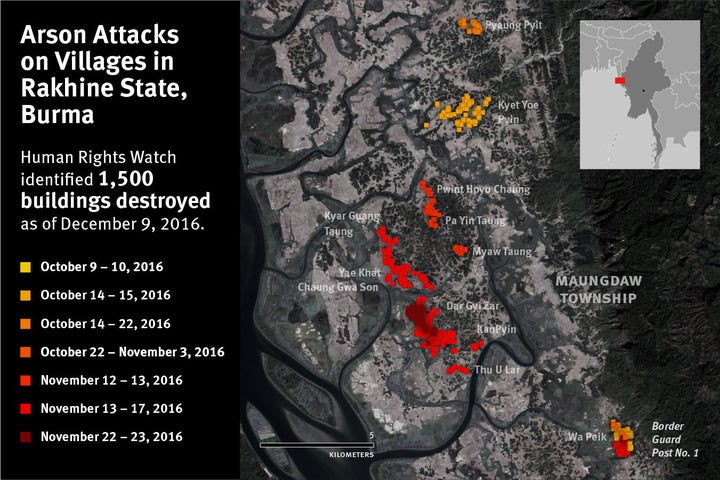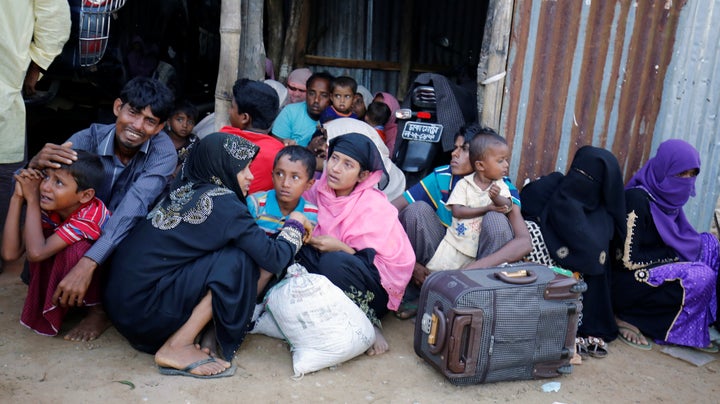
Read The Huffington Post And RYOT’s project Behind The Fence and watch 360 Video
Myanmar’s Rohingya Muslims have faced a new wave of violence in recent months, adding to the minority group’s status as one of the world’s most persecuted peoples. Newly released satellite images show that at least 1,500 buildings in Rohingya villages have been burned since early October, according to a Human Rights Watch report released on Wednesday.
The rights group’s report places the blame for the arson attacks with Myanmar’s army, which for decades has carried out alleged human rights abuses against the Rohingya under the pretense of fighting Islamist insurgents. Along with regime attacks, Myanmar’s more than 1 million Rohingya are the subject of widespread discrimination from much of the country’s Buddhist population that refuses to view them as a distinct ethnic group.
The Rohingya are also at the center of an enormous refugee crisis, with an estimated 200,000 living in camps in neighboring Bangladesh: Thousands more are attempting to seek safety in countries across the region. A surge in violence in 2012 in Myanmar’s western Rakhine state destroyed numerous Rohingya homes. At least 100,000 Rohingya were relocated to internment camps where their movements are restricted and they often lack access to basic necessities and health services.

The latest spate of attacks against the Rohingya come after police in Myanmar say nine of their officers were killed in an attack in Rakhine on Oct. 9, which they blame on Rohingya militancy. In response, Myanmar’s army has carried out what rights groups allege is a systematic and indiscriminate campaign against Rohingya villages in the state.
Rohingya villagers told rights groups that the army has used helicopter gunships to fire on civilians. They also say soldiers have set fire to their homes. Multiple Rohingya women also reported to Reuters in late October that soldiers raped or sexually assaulted dozens of villagers at gunpoint during the military advance. Thousands of Rohingya who attempted to flee to Bangladesh in recent months have been turned back, according to Amnesty International.

Police and officials in Rakhine have dismissed the allegations of army abuses against the Rohingya. One member of parliament from the state told the BBC that Rohingya women were too “dirty” for soldiers to rape, and blamed the arson attacks on Rohingya militants burning down their own community’s homes. The army blocks media access into Rakhine state, making it extremely difficult for journalists and rights groups to get reports from the ground.
The leader of Myanmar’s government, nobel laureate Aung San Suu Kyi, has remained largely silent on the army’s attacks. Although she is the de facto head of government after the country ended decades of military rule earlier this year, the army still retains considerable power. Aung San Suu Kyi’s reticence to place blame on the military or condemn the attacks on Rohingya has led to widespread criticism from rights groups and observers who hoped that she would address the country’s longstanding human rights violations.
See The Huffington Post and RYOT’s project Behind The Fence to take a virtual reality look at the plight of the Rohingya in Myanmar.
